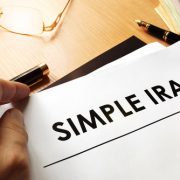Frequently Asked Questions about the Self-Directed SIMPLE IRA
Some of the most frequent questions we get here at American IRA deal with the differences between retirement accounts. What separates them? What do they stand for? What are their peculiar rules? And because it’s important to establish these ground rules, we sometimes respond to these answers with a round of FAQ. Today, we are looking at frequently asked questions centering on the Self-Directed SIMPLE IRA.
What is a SIMPLE IRA?
A Self-Directed SIMPLE IRA is a retirement plan that small employers, including self-employed individuals, can set up for the benefit of all their employees. Think of it as an effective way for business owners to create a retirement savings plan that employees can use as a benefit of their being employed at the company.
Self-direction refers to the process of handling your own IRA and choosing what goes in it, often with the help of a Self-Directed IRA administration firm to serve as custodian on the account. For example, an investor with an account at American IRA would be able to make decisions about what to invest in with a Self-Directed SIMPLE IRA. They would provide instructions for investment purchase decisions to American IRA to make sure the appropriate assets go into the retirement account. In American IRA’s role as Self-Directed IRA administration firm, it would serve to administer the paperwork and ensure that said paperwork is in order.
What does SIMPLE IRA stand for?
It stands for Savings Incentive Match Plan for Employees. This highlights how this account type is created for small businesses who want to reward their employees with retirement benefits. However, it can also be used by self-employed people who want to take advantage of the plan.
What kinds of rules go into a SIMPLE IRA?
Many of the standard retirement rules you will read about at this site would still apply. For example, you would not be able to make an investment in fine art and keep it within a SIMPLE IRA, as this would not be considered a valid retirement asset. Similarly, you would not be able to hold a piece of real estate within a Self-Directed SIMPLE IRA and rent that out to someone you know, as this would be an example of a prohibited transaction. In other words, a SIMPLE IRA is still a type of retirement investing account, and you would be expected to hold tight to all of the rules of retirement investing, even with self-direction.
Why is it important to self-direct?
It’s up to you to decide what strategy is right for you. However, many investors self-direct because they like the flexibility that it gives them. When investors self-direct, they are free to choose from a wide range of potential retirement assets and asset classes. This expands their horizons for diversification, or for seeking out high returns because they are working in an asset class with which they are familiar. These characteristics of the Self-Directed IRA are what make it appealing to certain investors.
What kinds of contributions can Self-Directed SIMPLE IRA investors make?
Employees can make contributions up to their specified limit. Employers can then contribute to the plan by matching the employee’s contributions to up to 3% of the employee’s compensation, working on a dollar-for-dollar basis. Without matching, the employer can simply contribute 2% of compensation as a retirement benefit.
Interested in learning more about Self-Directed IRAs? Contact American IRA, LLC at 866-7500-IRA (472) for a free consultation. Download our free guides or visit us online at www.AmericanIRA.com.









